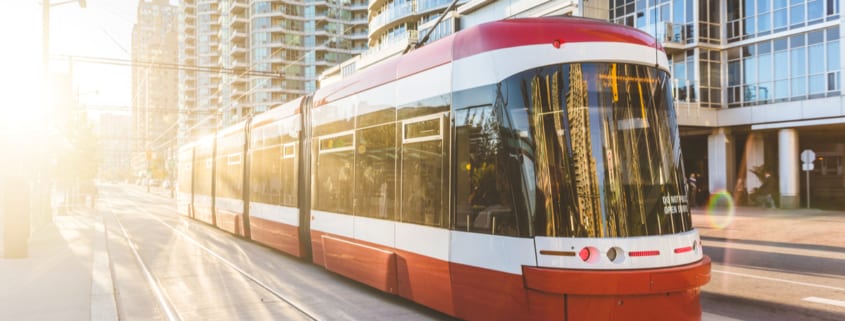Public Transportation Investments Lead to Growth for CRE
When you hear the word “infrastructure”, does commercial real estate come to mind? According to the Cranes and Lanes report by Transwestern, it should. Transwestern’s research presents a correlation between infrastructure investment and commercial real estate, suggesting “cities have recognized that in order to stay competitive and generate economic development, the city’s infrastructure must keep up”. With almost 70% of the world’s population expected to live in cities by 2050, both newer and established cities are on an expedited timeline to catch up with existing demand and plan for future needs.
Read on to discover why transit investments, pertaining to bus and rail systems, and commercial real estate typically mean an increase in rent growth and property value and implications for the future of CRE.
Rent Growth
According to The American Society of Civil Engineers, the United States needs to spend $3.6 trillion by 2020 and some $4.5 trillion by 2025 for the country’s infrastructure to effectively improve its score on its next Infrastructure Report Card. The Economic Policy Institute says that an investment of $18 billion annually in the United States’ infrastructure would generate a $29 billion increase in GDP and add $11 billion to the American economy. Data indicates that the majority of infrastructure projects result in rent growth and increased occupancy, which isn’t surprising because infrastructure is considered to be the most important factor influencing real estate investment and development decisions in cities around the world.
Transwestern’s report also suggests that “vacancy for transit-accessible buildings is lower than overall vacancy”. Properties near public transportation are also able to demand rents for about 80% more than those with locations that are further away. Tenants are willing to pay these increased prices due to easier, more convenient access to transit systems. Increased rents and tenants’ willingness to spend more indicate why transportation systems are so fundamental to commercial real estate investments.
Property Value
Generally, the value of a property increases based on its proximity to other properties with synergistic land uses. Public transportation can increase commercial real estate development near high-capacity transit lines, resulting in an increase in property value. A transit premium, or value added to a property by proximity to high-capacity transit, may be anywhere from just a few percent to over 150% depending on the local regulatory environment, regional connections, and national and regional economics.
Properties placed near new infrastructure benefit the most in terms of property value. The average price gap between a railway station zone and the average commercial property is 16.4%. Better connections to a transport network means improved access to transport services, which equals an increase in property value.
What Does This Mean for The Future of CRE?
In 2021, The American Society for Civil Engineers will release its next Infrastructure Report Card. The last report, issued in 2017, revealed the harsh truth that America’s infrastructure is suffering, meaning that conditions are “mostly below standard,” exhibiting “significant deterioration,” with a “strong risk of failure”. For commercial real estate professionals, an increase in future investments in infrastructure could be a defining point for the industry.
According to a study performed by the Urban Land Institute, upgrades to public transit systems emerged as a strong priority for future investments. These upgrades include bus and fixed-rail systems and were ranked highly amongst both the public and private sectors. Both sectors also rated infrastructure quality as a top consideration when determining where real estate investments are made.
Seventy-five percent of respondents of the Urban Land Institute’s study ranked cooperation between CRE developers and the government as one of the most important factors of the funding approach for new infrastructure. As consumer demand for a close proximity to public transportation continues to grow, our cities’ infrastructures pertaining to public transportation will remain an important component not only of economic growth but also of the future of CRE.
To learn more about the correlation between infrastructure investments and commercial real estate, read Aligning Infrastructure Investment & CRE Development.











